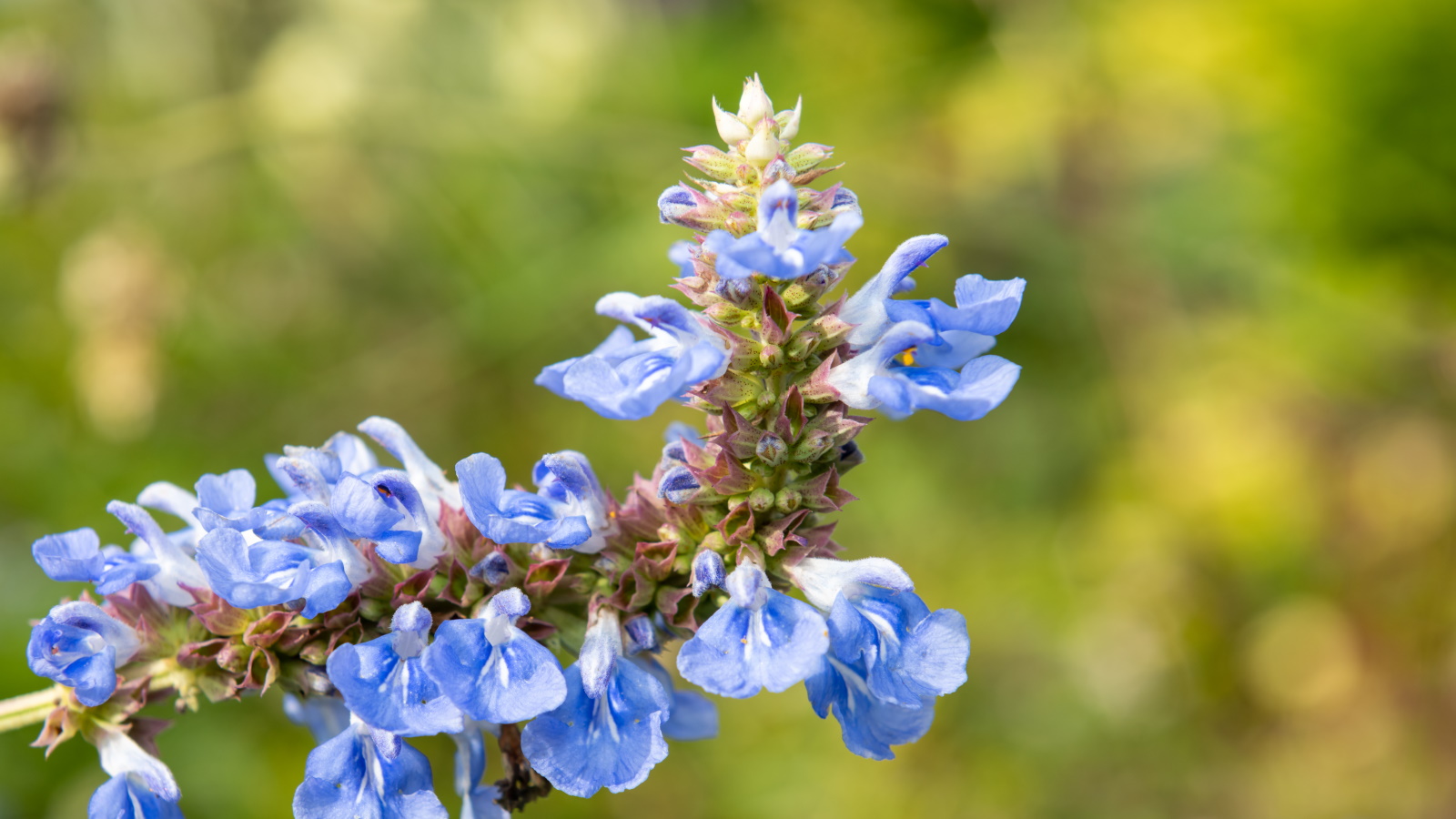
Blue flowers are a rarity in the plant world, long captivating gardeners and botanists with their elusive beauty. While it can be difficult for gardeners to find plants that produce blue flora, there are a small number of flowering shrubs and perennials that possess striking azure and cerulean blooms.
For gardeners seeking to create a cool and understated planting scheme, true blue flowers will certainly help to create a calming atmosphere. In addition, for those considering flower bed ideas this year, or asking how to plant a cottage garden border, pairing blue blooms with white or purple flowering plants will help to create a refined but alluring flower garden aesthetic.
Here, we share 7 of the finest blue flowers, with a range of larger shrubs and smaller perennials suitable for both large backyards and small urban spaces. While some of these recommendations appear pale blue and some verge on a deep, rich purple, these planting options will undoubtedly add something unusual to your outside space.
The best true blue flowers
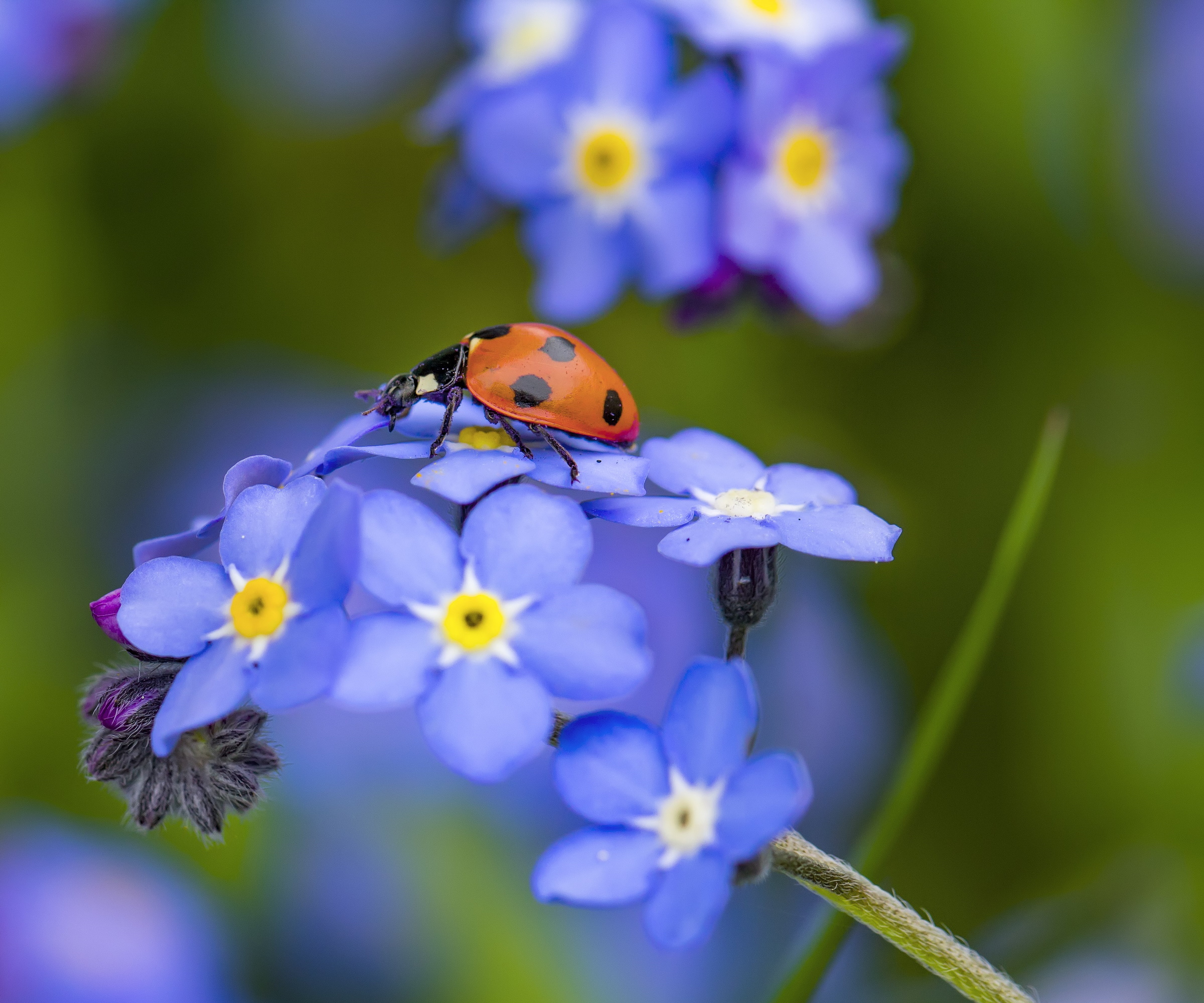
Blue flowers are both rare and unusual. While orange, red and yellow are common colors for flowering plants, blue remains elusive. Here, we share some of the best plant options, recommended by experts, that will add interest and impact to your outside space.
1. Plumbago
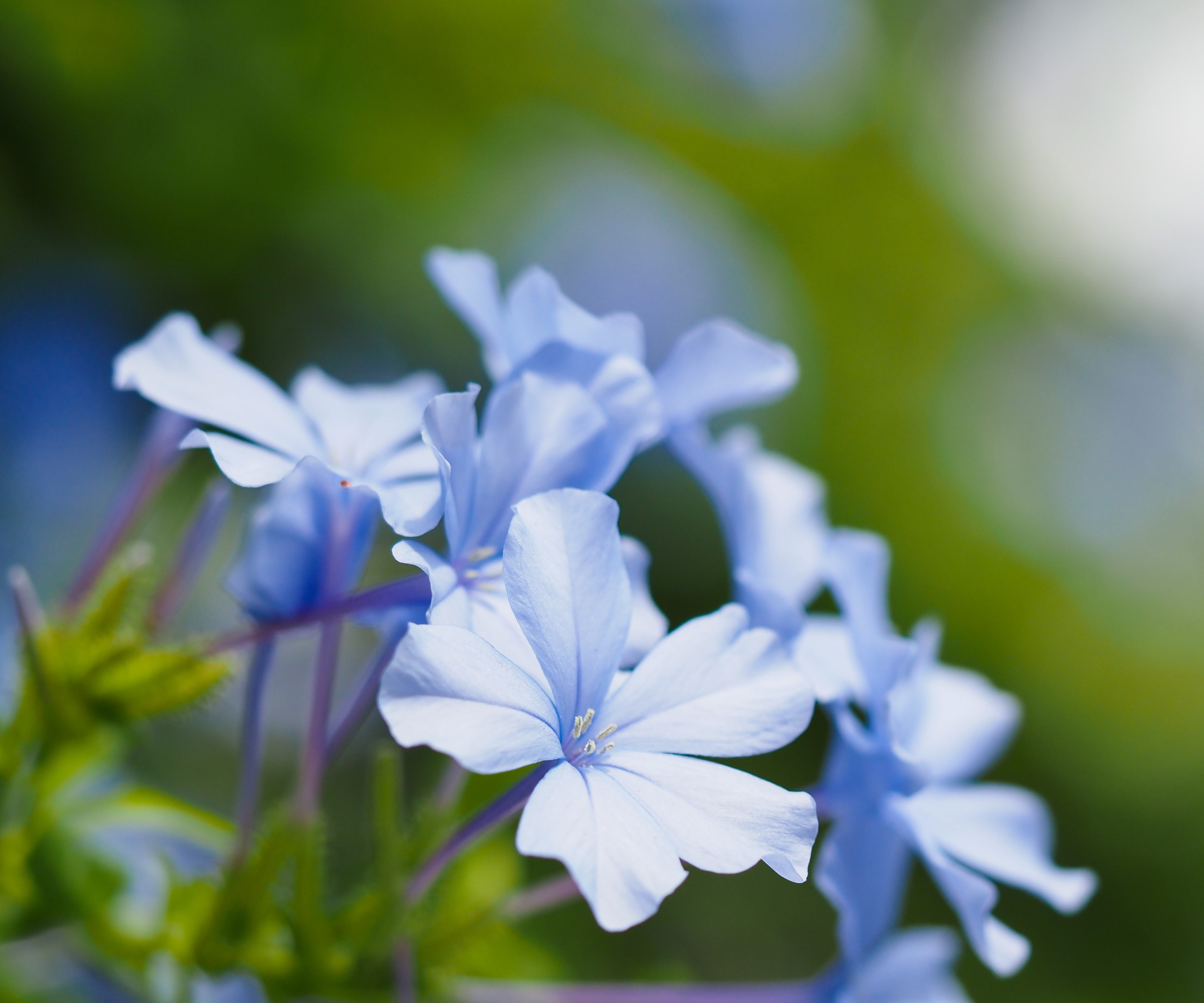
Plumbago is a blue flowering shrub for full-sun gardens and yards. Producing clusters of pale sky-blue blooms, this shrub is renowned for its reliability and long season, often flowering for spring, summer and fall, depending on the climate in your region. It is best grown in a free-draining, sheltered corner of the yard.
'Plumbago is fully hardy in US hardiness zones 9 to 11,' says Tricia Hunt, plant expert and owner of Millstone Nursery. While it can be grown in cooler zones, 'it would need to be planted in a container and protected in the winter,' says Tricia.
For those asking how to grow plumbago, remember that while it is traditionally grown as a shrub, it can be trained to grow across plant supports or structures. It does not naturally vine, but with regular tying in plumbago can adorn your walls, fence and pergola with unique true blue blooms.
2. Bog sage
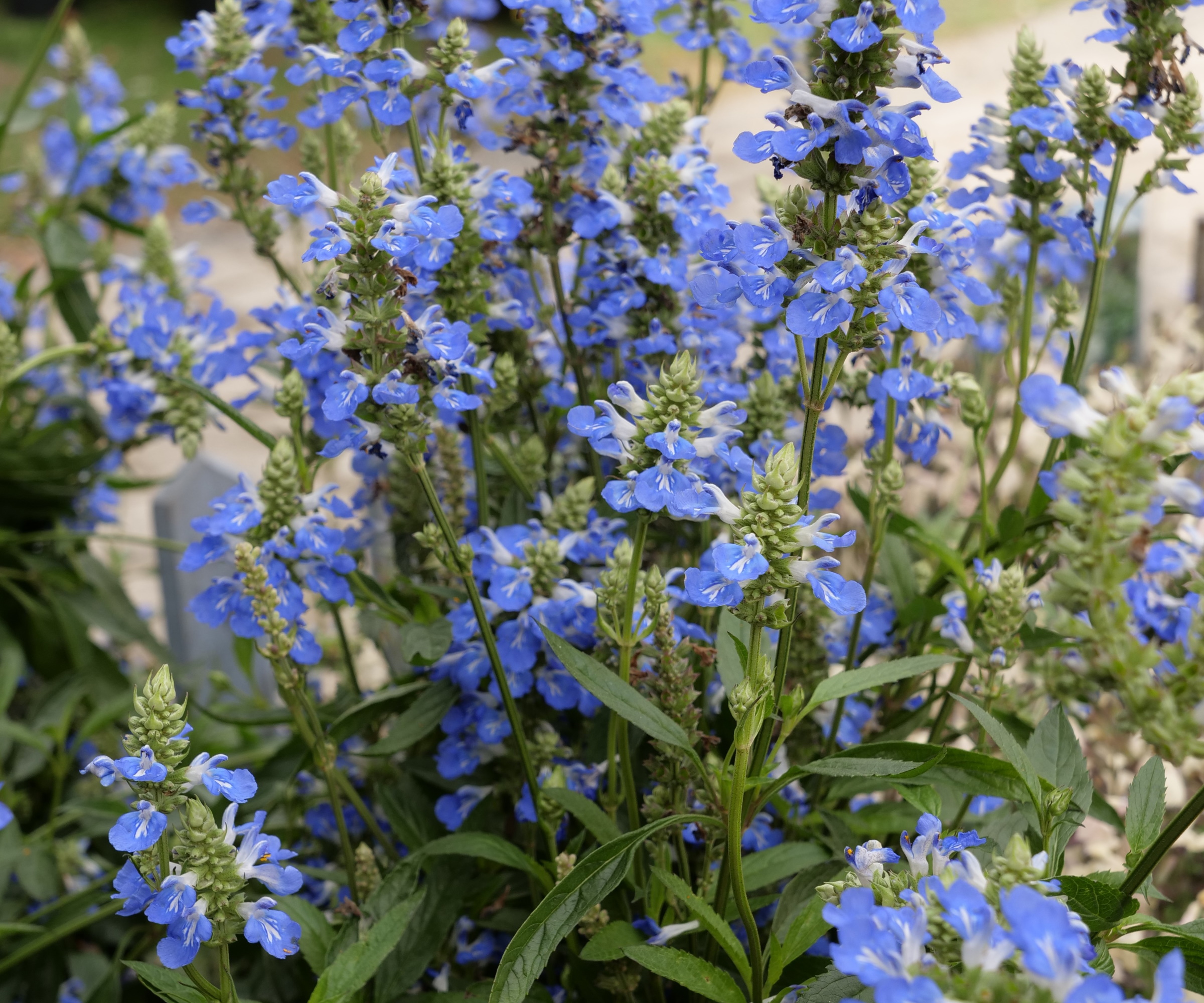
Bog sage, Salvia uliginosa, is a fast-growing perennial, producing attractive spikes of pale-blue flowers in the summer and fall months. Bog sage is an ideal plant for the back of the garden border, where it can reach up to 8 feet tall, providing a striking backdrop for your other shrubs and perennials.
When considering how to grow salvias, like most other species in this plant family, Salvia uliginosa prefers a full-sun position. In the summer months, it will prove to be a popular plant for pollinators in your yard, humming with insect life during the summer months.
Native to the moist wetlands and watercourses of South America, bog sage grows well in US hardiness zone 8 to zone 11. As a quick-growing plant, bog sage can be pruned each year to the base, shooting new green stems in the spring. In cooler zones, it is recommended that you protect the crown of your plant with a thick mulch over winter.
3. Himalayan Blue Poppy
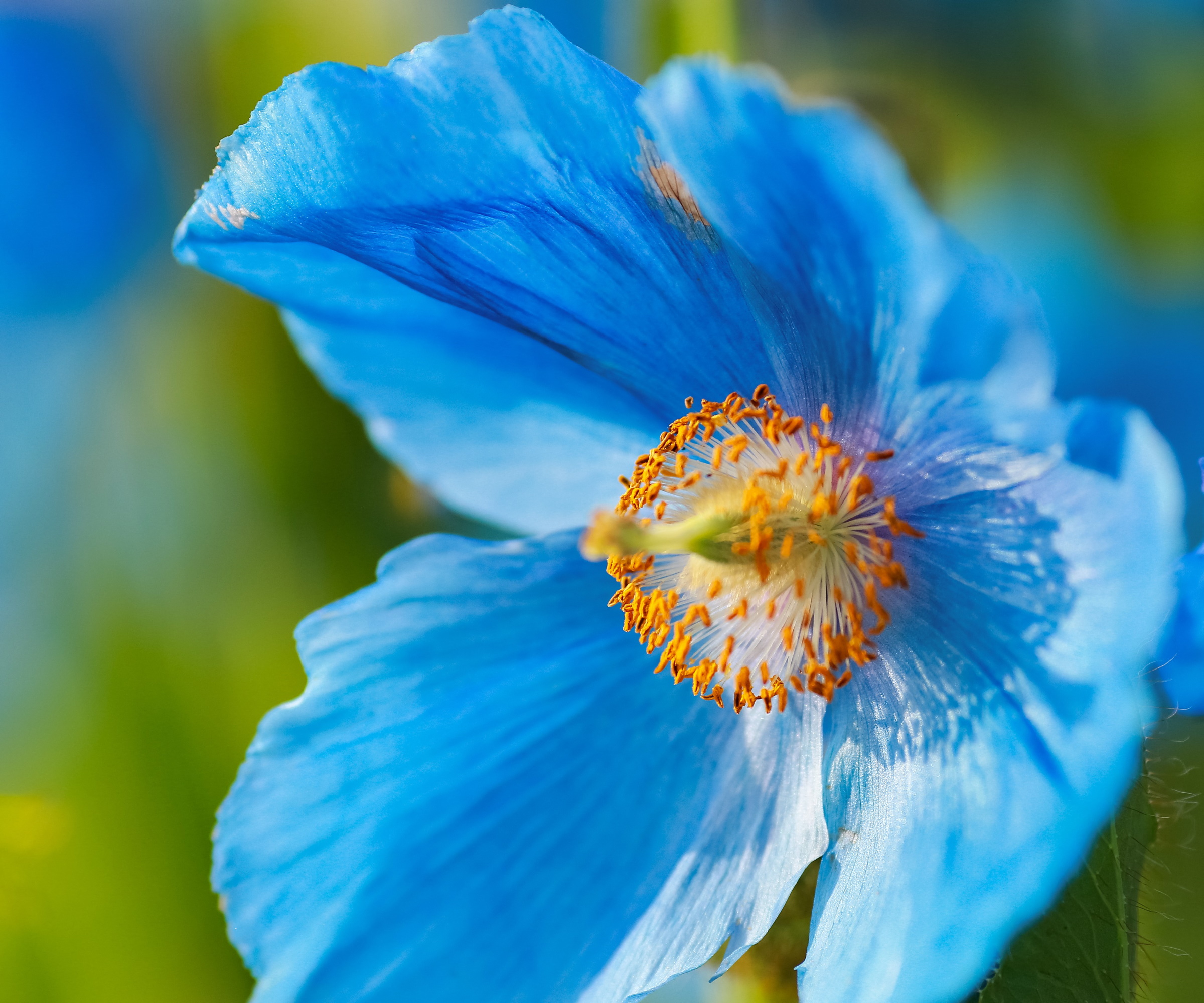
There are many types of poppies, but perhaps the most unusual is Meconopsis, a large group in the poppy genus, more commonly known as the Himalayan blue poppy.
Growing best in US hardiness zone 5 to zone 9, large open flowers are made of translucent petals that appear sky blue. While blue poppies are known to be tricky to cultivate, they are not impossible given the right conditions. With a preference for partial shade, these perennials need shelter from strong winds, thriving in protected positions in cooler, wetter regions.
Shop blue flowering plants
The agapanthus blue lily is a great landscape favorite in warm winter regions due to its colorful trumpet-shaped flowers that grow during late spring into early summer. An easy-to-grow perennial… it adds a unique texture to garden design beds, borders, and containers.
This blue hydrangea boasts large, mophead blooms that turns an intense shade of blue in Pacific soils, and vivid pink in alkaline soils. This natural color transformation adds a captivating element to the plant, creating a multi-dimensional and ever-changing spectacle in your outdoor space.
Sea holly 'blue glitter' has so many unique qualities. This tough plant is a rock star! Spikes, prickles, and spines are just a small part of the show-stopping features this plant offers, with blue-purple blooms sure to steal the show in your yard this summer.
4. Blue Hydrangea
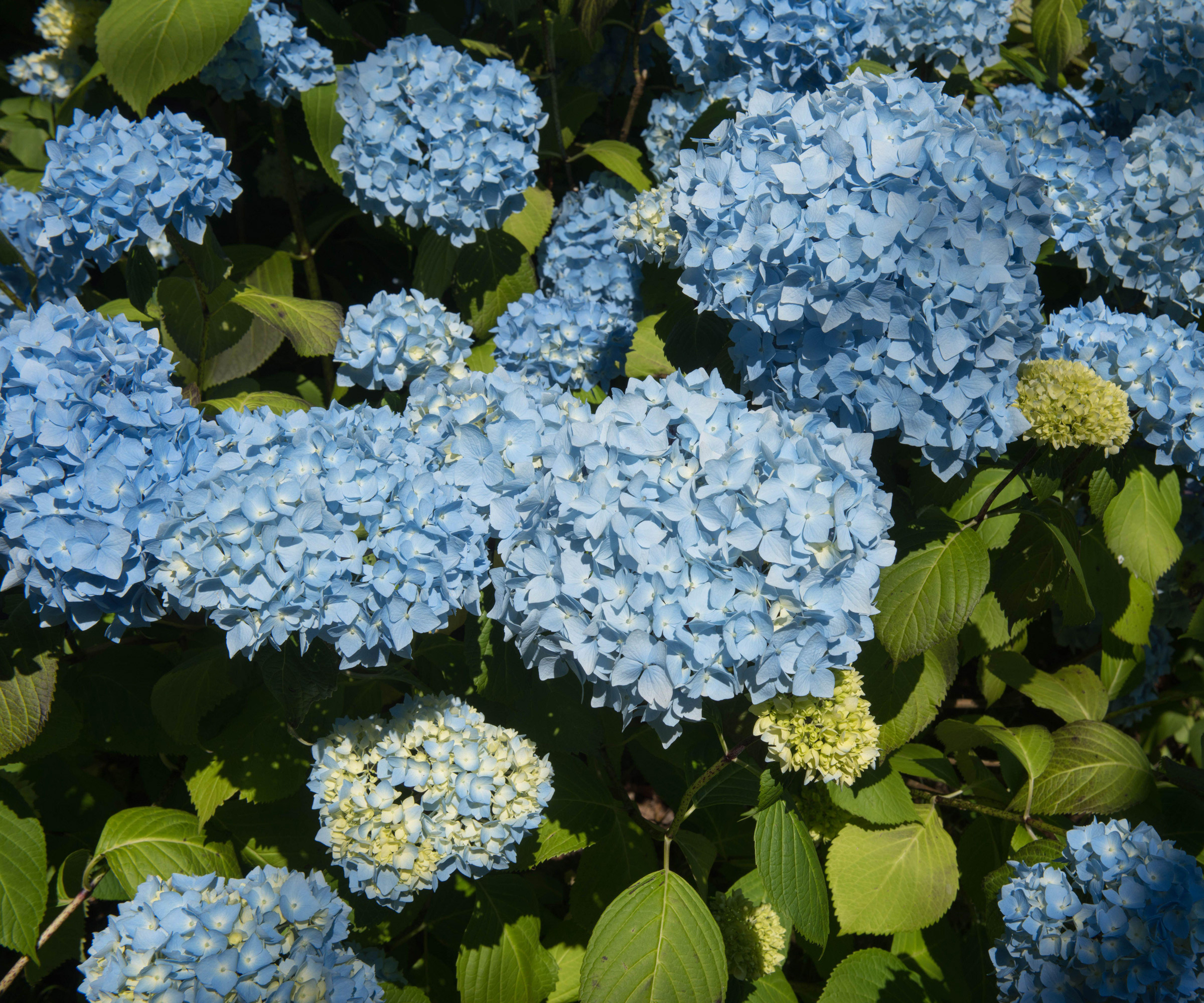
Hydrangeas are one of the most popular and well-known flowering shrubs for full sun positions. Valued for producing a mass of mophead blooms, hydrangeas are celebrated for bringing bursts of color to the garden borders.
Growing in US hardiness zone 3 to zone 9, hydrangeas are notable as shrubs that are easy to grow and tolerant of most soils. However, it is important to remember that for blue hydrangeas to remain blue in your yard, they need acidic soil.
Hydrangeas planted in alkaline situations tend to turn red or pink, while those planted in acidic spots turn blue. If you are wondering how to make soil more acidic, there are many DIY options to consider, such as using coffee grounds at the base of a shrub to maintain an acidic composition.
5. Siberian bugloss
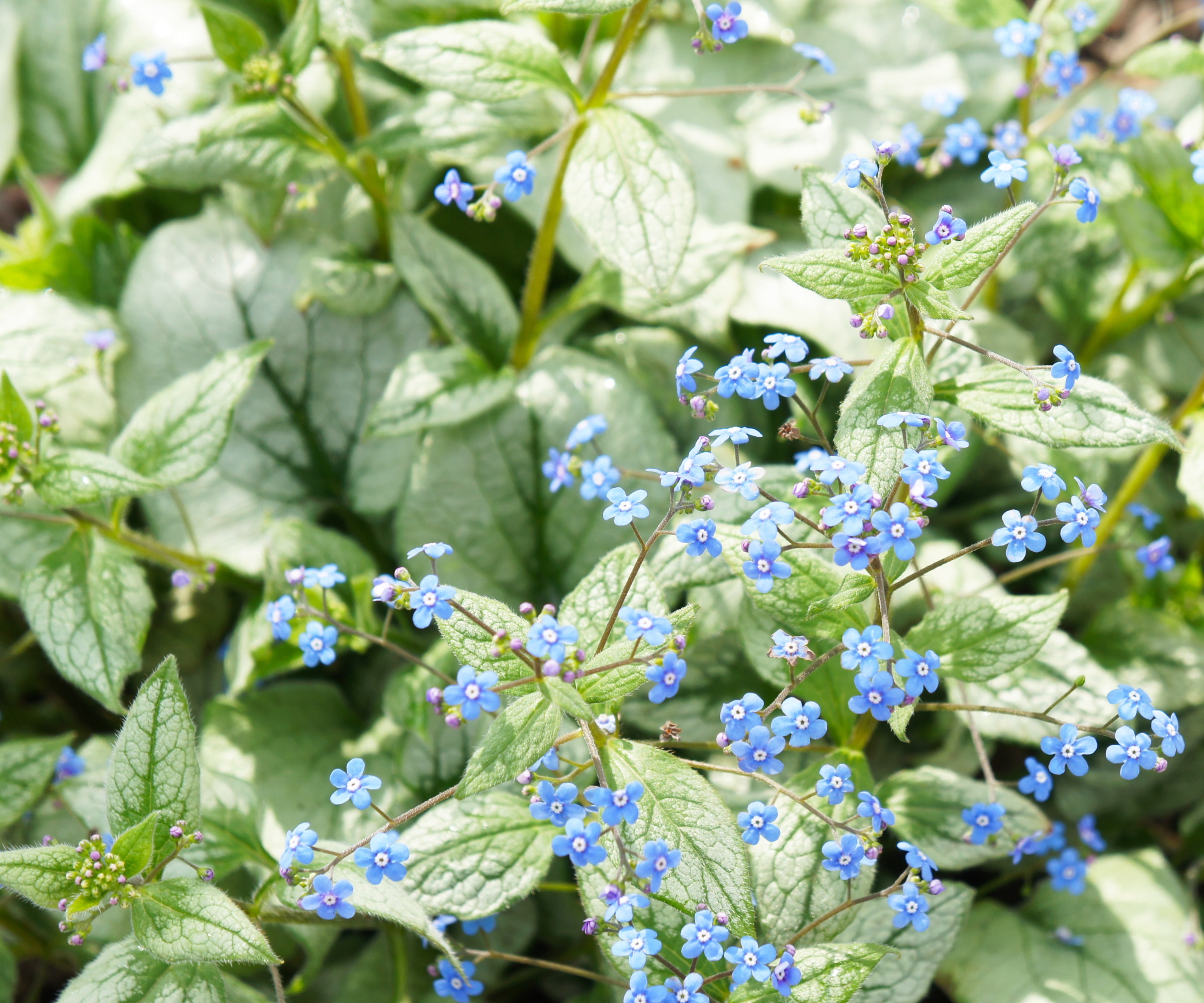
Another true blue recommendation is Siberian bugloss or Brunnera macrophylla. While it may appear similar to the popular forget-me-not flower, these two plants are not related.
Siberian bugloss grows well in dry, shady spots, and should be a consideration for gardeners who are looking for drought-tolerant ground cover plants, growing particularly well beneath large, established trees.
Growing well in US hardiness zone 3 to zone 8, Siberian bugloss is popular not only for its blue flora but for producing attractive silver-green foliage, illuminating shady spots in the backyard. One variety, named 'Jack Frost', is renowned for its silvery, heart-shaped foliage, made all the more dramatic by the dark green veins, as seen in the image above.
6. Senetti
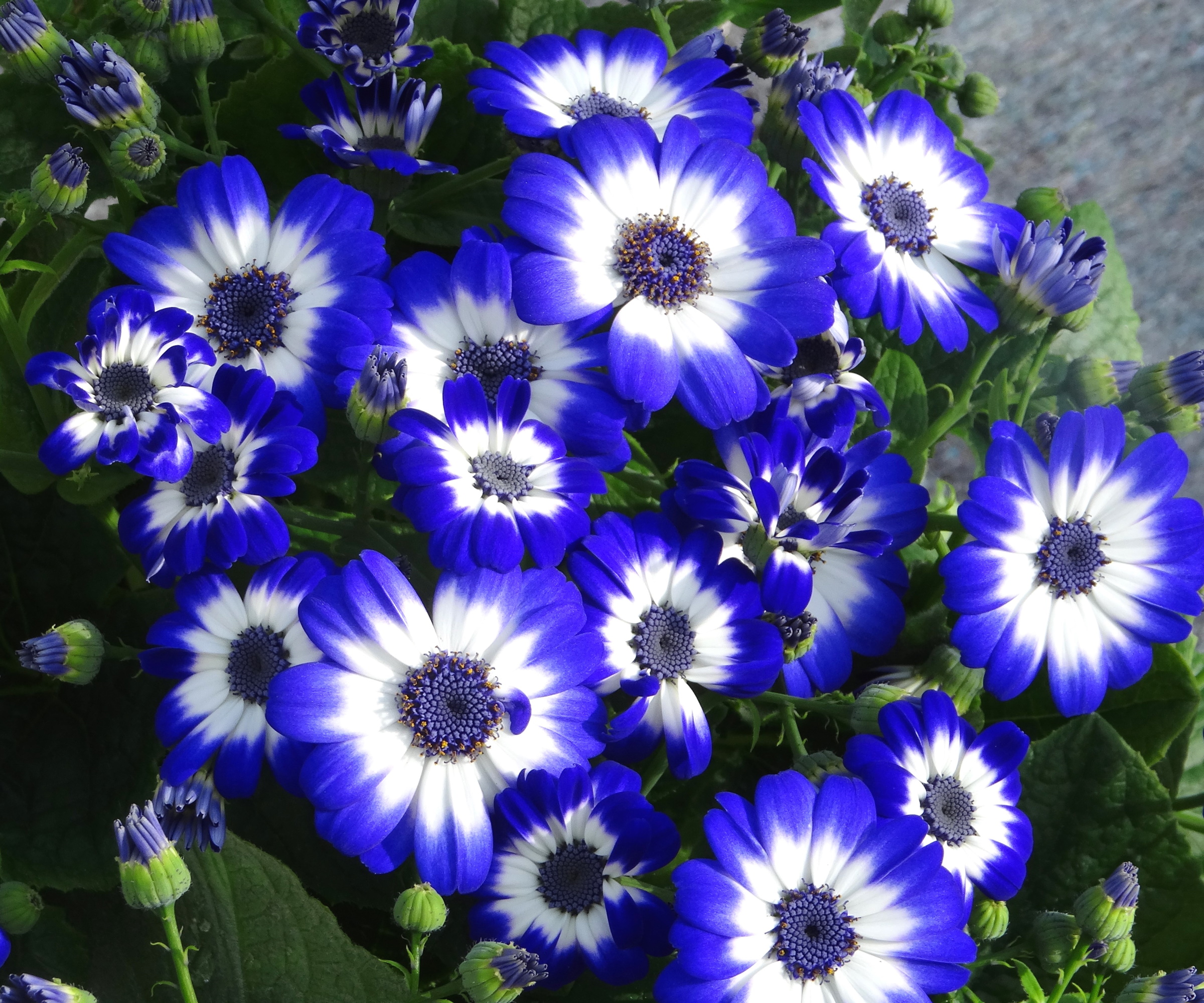
For gardeners seeking a deeper, darker blue, senetti are unmistakably vibrant, and often used by those seeking tropical garden ideas. 'There are many blue senetti varieties like 'Blue Bicolor' and 'Blue Halo', says Gail Pabst, horticulturist and marketing director for the National Garden Bureau.
This tender plant is typically grown as an annual in cooler zones but can be treated as a perennial for those residing in sub-tropical zones, growing well in US hardiness zones 10 and 11.
Senetti clumps produce oval deep green leaves that provide a backdrop for the daisy-like flowers that will flower for most of the summer in the right conditions. 'What's more, bloom count can be as high as 200 on a single plant that is grown in a 10-inch pot,' says Gail.
'In warmer zones, they are a perfect choice for winter, with plants hitting the market in late January. In the cooler zones, the timing is late March through April, perfect for Easter,' adds Gail.
7. Sea holly
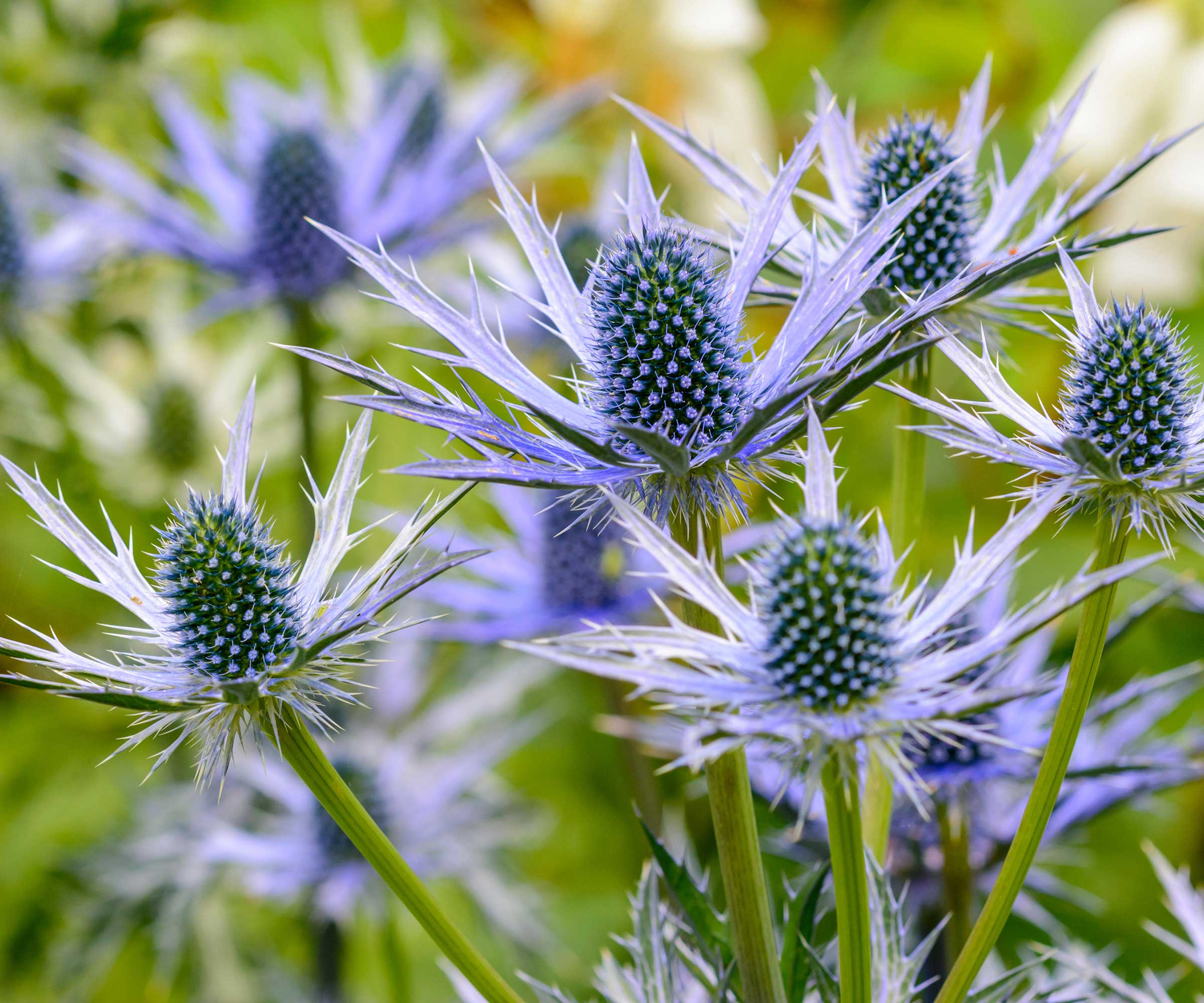
As its name suggests, sea holly is a hardy coastal plant, known for producing distinctive prickly foliage and thistle-like flowers. Typically grown in poor, sandy soils, sea holly, or Eryngium, can tolerate full sun and open, windy yards.
Growing well in US hardiness zones 5 to 9, many sea holly varieties produce attractive blue-tinted flora. 'Big Blue', for example, is notable for producing blue flowers atop upright silver stems. Plant with care, as sea hollies do not respond well to disturbance once they are established.
FAQs
What blue flowering plants can I grow in a container?
For larger containers that can be placed in a sunny situation, blue hydrangeas or blue agapanthus plants tend to look particularly effective when grown in a pot. Remember that for hydrangeas to remain blue, the soil used when planting must be acidic. For smaller pots or shady situations, why not grow Siberian bugloss or sinetti, both maintaining a compact form and tolerating partial to deep shade. As with any container plants, be sure to frequently monitor watering during the growing season.
Blue shades are renowned as a calming color when used in design, and incorporating true blue flowers in your yard will certainly help to instill a sense of peace and tranquillity. In addition to color, consider other sensory garden ideas that can also help to create a sanctuary in your yard, such as scent from flora or trickling sounds from water features.







